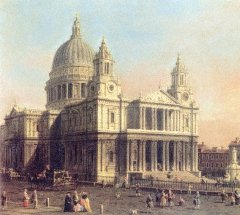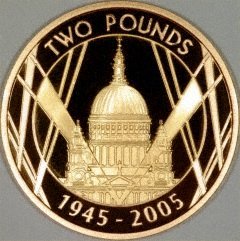
|
WWII - World War II, London, the Blitz & St. Paul's Cathedral On May 7th 1945 the Second World War came to an end in Europe as all German forces surrendered unconditionally to the allies. The following day, May 8th, was called Victory in Europe Day or VE Day. The British people had endured nearly six years of war and the relief at the end of hostilities was evident on the streets of Britain as crowds of happy people danced for joy. The grey and battered streets of London were a strange backdrop to these joyful events; nearly five years had passed since the capital had first experienced Hitler's attempt to subdue the morale of the Londoners. German bombers first appeared in the skies over London during the afternoon of September 7, 1940 signifying a shift in Hitler's attempt to defeat the British. During July and August, the Luftwaffe (German air force) had targeted RAF airfields and radar stations in preparation for the German invasion of the island. With invasion plans put on hold and eventually cancelled, Hitler turned his attention to destroying London in an attempt to demoralize the population and force the British to make peace. Blitz, the German word for 'lightning', was used by the British to describe the bombing raids carried out over Britain by the Luftwaffe in 1940 and 1941. At around 4:00 PM on 7th September 1940, 348 German bombers escorted by 617 fighters dropped tons of bombs on the docks and industrial areas of London. At 8:00 PM another wave of bombers, guided by the fires set by the first wave, began another attack which lasted until the early hours of September 8th. For the next 57 days in a row London was bombed, or 'blitzed', either during the day or night. Fires destroyed many sectors of the city and Londoners had to seek shelter wherever they could find it - the Underground stations were used as shelters for nearly 180,000 people during the night raids. The Blitz ended on May 11th 1941 when Hitler called off the attacks in order to move his bombers eastwards in preparation for Operation Barbarossa - Germany's invasion of the Soviet Union.
The City and St Paul's Cathedral
The greatest of all the fires was directly in front of us. Flames seemed to whip hundreds of feet into the air. Pinkish-white smoke ballooned
upward in a great cloud, and out of this cloud there gradually took shape - so faintly at first that we weren't sure we saw correctly - the gigantic
dome of St. Paul's Cathedral. St. Paul's was surrounded by fire, but it came through. It stood there in its enormous proportions - growing slowly
clearer and clearer, the way objects take shape at dawn. It was like a picture of some miraculous figure that appears before peace-hungry soldiers
on a battlefield.
It is generally thought that St Paul's Cathedral escaped damage during the Blitz while the City all around it was devastated. Although it escaped major damage, the Cathedral was not completely unscathed. On December 29th 1940 a bomb demolished the High Altar and the Crypt suffered minor damage. Many of the stained glass windows were destroyed and there was a great deal of splinter damage from shrapnel and flying glass. The shattered windows were later replaced with clear glass which had been the original intention of the Cathedral's architect, Sir Christopher Wren, thus improving the quality of light within the building. The reconstruction and repairs, according to Wren's original plans, were not completed until 1962.
The Cathedral today
Today, it is difficult to visualise London without the familiar dome of St Paul's. It may no longer dominate the skyline, nestling between the glass and steel towers of 21st century London, but it has its own unique appeal and instant attraction. During those dark days of the Blitz, over half a century ago, the Cathedral gave Londoners a feeling of pride and determination in the face of adversity.
Gold Proof £2 Coin
Red Arrows at Blackpool Airshow August 2009
|
 St. Paul's Cathedral by Canaletto
|

